Datsun 240z Vs 280z: Which One Is Best?
The Datsun Z is a legendary marque in the sportscar world, with the 240Z and 280Z being two of the most popular models. But, which one suits you the best? In this guide, we’ll explore all the differences between these two iconic models.
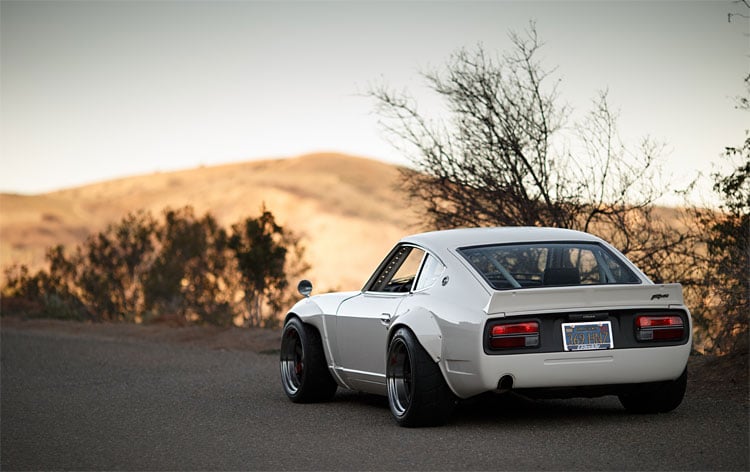
Here, you can click on a particular aspect you’re interested on within this article, otherwise, continue scrolling as we introduce these incredible cars.
- Datsun 240z History
- Datsun 280z History
- But… What about the 260z?
- Cosmetic Changes – 240z vs 280z
- Suspension Changes – 240z vs 280z
- Which is Best? 240z or 280z?
- Conclusion
Introduction
In the late 1950s, a Japanese car manufacturer named Datsun decided to make a brave decision in challenging the Western world at the affordable sports car market for the first time.
This car would be named the Fairlady, and despite having a unique appearance, its disappointing performance failed to tick the right boxes to compete in the American market.
Refusing to fail, Datsun returned to the drawing board for a second attempt. This time they opted for a smaller, lighter, sleeker, and more powerful alternative, which would eventually become a legend in the sports car world – the Datsun 240z, also known by many as the Nissan Fairlady Z.
This incredible car was an instant success, and the humble S30 chassis later went on to change the face of racing, Japanese imports, and affordable driving thrills forever.
With the 240z being Datsun’s answer to Toyota’s 2000GT, which ultimately toppled the market, the 240z quickly achieved worldwide success, also marking the birth of the infamous Fairlady family.
Check out this 240/280 sound compilation video!
From 1970 through to 1973, popularity continued until a brand-new model hit the market, the 260z. In true Nissan fashion, this was named after the 2.6 liter engine displacement.
You’d be forgiven for thinking that this would be an improvement, but due to strict U.S. safety and emissions rules, despite having extra power under the hood at 162bhp, it actually ended up being a slower and less exciting car overall.
With some daring new ideas, such as a 2+2 four-seater option on a long-wheelbase, the 260z never really managed to attract the same desire or appeal as its sportier older brother. With the 2+2 featuring more weight (and rear seats) than the 240z and around the same power, it took just shy of ten seconds to hit 0-60mph.
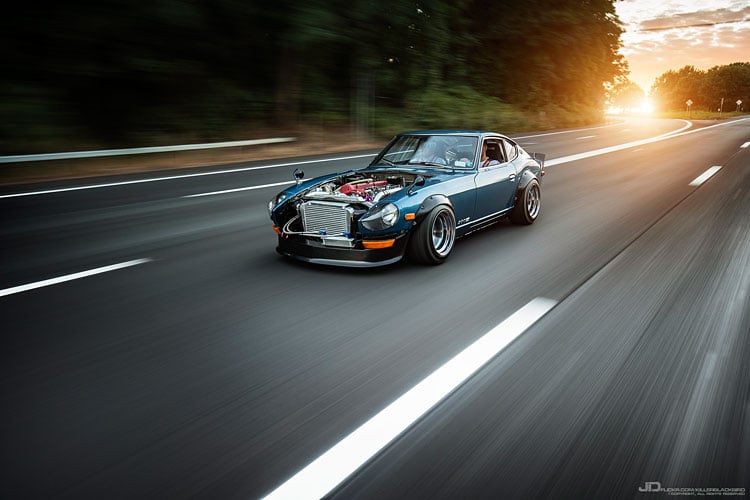
After failing to impress, this short-lived addition to the Fairlady family lasted just 18-months before the birth of the newest member of the family to the North American market, the 280z.
In the meantime, the rest of the world was handed what was simply a face-lifted 260Z.
We can’t resist a video of a 280z sitting sideways. Check out what went down when Formula Drift Champion Chris Forsberg got behind the wheel of this Skyline-powered weapon!
How about this 1900 horsepower 240Z-shaped weapon set up specifically for drag racing?
In this article, we’re going to take a look at the differences between the immensely popular 240z and the 280z to give you all the information you’re going to need on these iconic legends.
Datsun 240z History
As the 240z hit the US docks in October 1969, the 2.4L inline-six cylinder engine provided thrilled new owners with an impressive 151hp, four-wheel independent suspension and a four-speed manual gearbox that was capable of achieving 0-60 in under eight seconds.
Datsun’s attempt to challenge the European and U.S. sports car markets was a huge success, and not only was the 240z a spectacular car to drive, but it was also more reliable than any other sports car available on the market at the time.
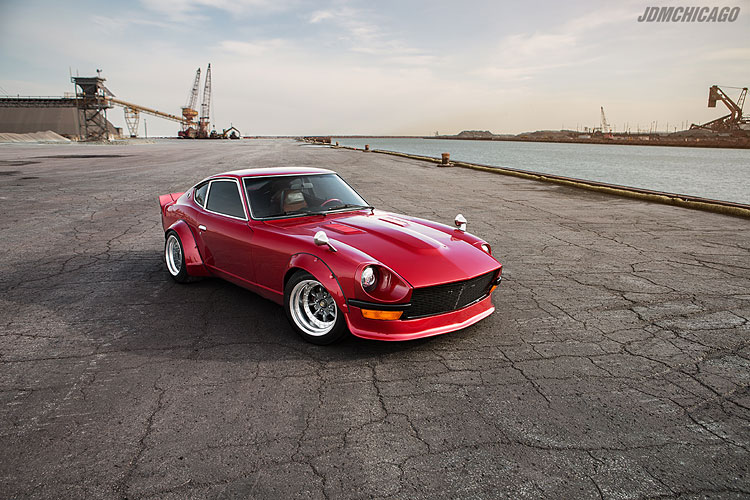
Its main rival, the British-born MGB-GT had begun showing its age with a 5-year old, outdated design. There was simply no match for the performance, design, reliability, and drivability for the money. A perfect, sensibly-priced sports car for the keen driving enthusiast had finally arrived!
As well as its ability to overcome its competitors, the extremely reasonable cost of just $3,500 undoubtedly helped to boost its popularity. (If anyone has one for sale at this price now, feel free to hit us up!)
As sales began soaring in the showrooms, at a rate of up to 50,000 units per year in the U.S. alone, this huge scale of instant popularity meant that Datsun was unable to keep up with the demand and before they knew it, dealerships had long waiting lists with people desperate to get their hands on the brand new Z-car.
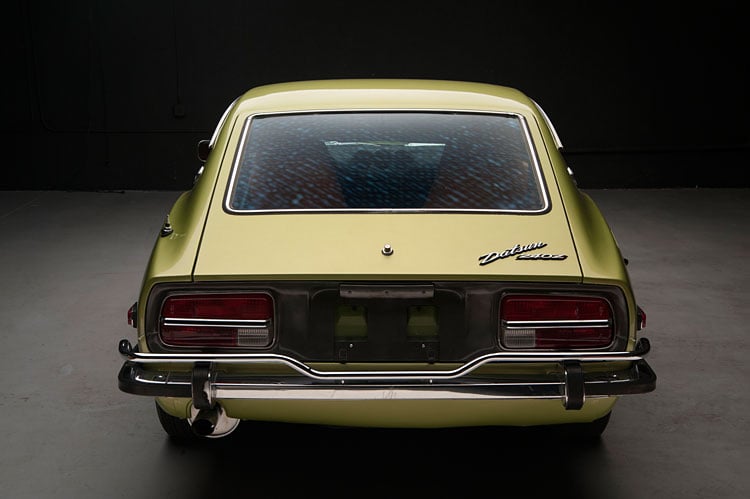
Under the hood of the U.S. model was an L24 inline-6 engine with twin SU carburetors, producing 151 horsepower. Despite the car for the Japanese market being more race-orientated, it only featured a 2.0L L20 straight-six Single Overhead Camshaft (SOHC) engine from the Datsun 510, with 130hp.
If you put the 240 to the test on the open road, it was capable of hitting 0-60mph at around the 8-second mark and a quarter-mile in 15.5 seconds at 86.5 mph. On a long stretch of road, it was eventually capable of achieving 125 mph.
Considering a 240z? You’ll want to take a look at this useful buyer’s guide:
The first 240z’s to hit the market were the extremely rare Series I models. These were built from October 1969 through to January 1971. Only 543 cars were produced in 1969 and a very small quantity made it to the market, undoubtedly making them the rarest and most sought after special edition Nissan Z-car.
After that, 16,215 1970-series cars headed to America, making the Series I the holy grail of the Fairlady family. If you’re lucky enough to find one of these, chances are it’s going to cost you a pretty penny but will undoubtedly be a great future investment.
Between 1971 and 1973, Nissan also launched the Series II, III, and IV and within just a few years, a total of around 150,000 240z’s had entered the U.S. market.
Datsun 280z History
After a short, yet slightly disappointing year with the 260z, Datsun returned to their winning ways with the launch of the 280z in 1975, as owners rejoiced and faith was restored in the brand.
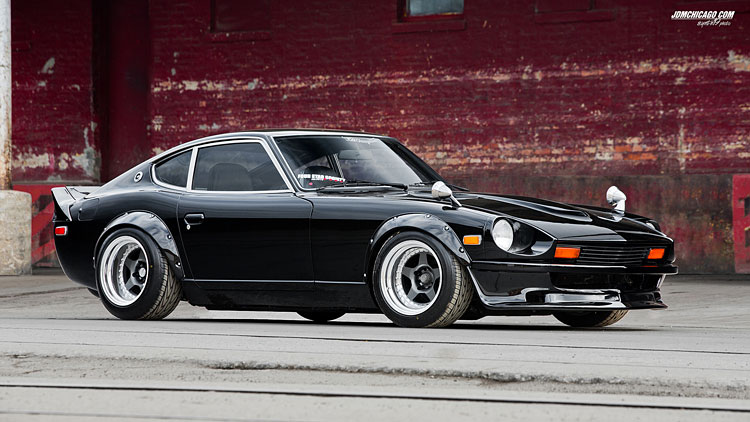
As you’ve probably guessed from the name, the 280 featured an even larger engine at 2.8L, which was created by enlarging the bore of the 260’s L26 engine to comply with the ever-changing emissions laws.
Alongside the engine upgrades, they also included a five-speed manual transmission in the later model years (’77-’78).
Not only this, but the L28 engine also featured a far more reliable upgrade with modern technology as they included the Bosch L-JETRONIC fuel injection system.
These upgrades meant that the engine was now capable of 170hp at 5,600 rpm with 163ft/lb torque at 4,400. Compared to the 151hp and 146 lb-ft of torque of the 240, it was quite a significant increase.
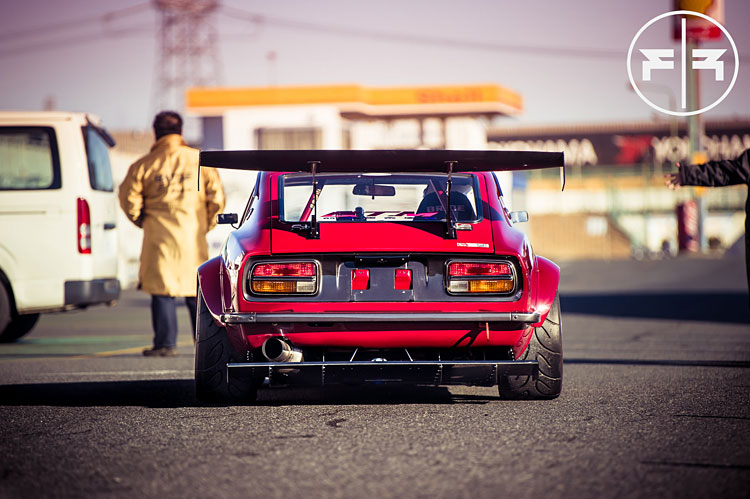

With demand changing in the markets, Datsun decided to make several components of the 280z more luxurious, making for a far smoother ride for daily convenience. Alongside this, they were also forced to make some (arguably) less-desirable impact-absorbing bumper changes to once again comply with the updated safety laws.
This may have made the 280z the heavier sibling, but its increased performance meant that it was equally as capable when it came to putting the power down in a straight line.
Check out what happened when Gas Monkey Garage got their hands on a 280z!
Alongside the coupe, they also continued the 2+2, four-seater long-wheelbase version of the Datsun Z car which was first seen in the 260Z, which certainly didn’t make the 280 any lighter!
With these new changes came a higher price-point, and the 280z retailed at $7,968, which is still a fantastic deal by today’s standards!
Despite only ever being sold on the U.S. market, Datsun went on to sell roughly 228,000 280z’s, and around 90% of the global Z-car sales were In the U.S., which totaled a whopping 450,000 throughout the S30 lifespan of 1969-78.
After their successful run with the 280z, Datsun then went on to unveil the second-generation of Z-cars in 1979, with a 280ZX which featured a completely new refined and luxurious design, and huge changes being made over the S30 chassis.
But… What about the 260z?
There’s no question that the 260z is the least desirable of the three options, but it still plays a significant role in the history of the Fairlady Z.
The 260z failed to receive a great response from American buyers, and many enthusiasts saw it purely as a temporary ‘smog car’ to allow Nissan to pass the new emissions laws.
Despite having more power, it also had more weight, and in real-world testing, the 240z would come out on top in just about every way.
After a short-lived 18-month production run for the 260z between 1974 and ’75 in the U.S. this also marked the introduction of the 2+2 four-seater cabin layout, long-wheelbase chassis for the first time.
Despite the convenience of two additional seats, they failed to capture the same level of popularity, even to the present day.
On a positive note, this can often make them a more affordable alternative for those of you on a budget with dreams of owning an S30.
Despite the lack of interest on the U.S. market for the 260z, the model actually continued to be sold to the rest of the world until the end of 1978, however, the US markets were fortunate to receive the 280z in 1975-78, when Nissan eventually ceased production of both models.
Cosmetic Changes – 240z vs 280z
Considering that the S30 chassis was to be sold for nine years, there were actually very few changes made to the exterior styling compared to most cars, and we’re thankful for that!
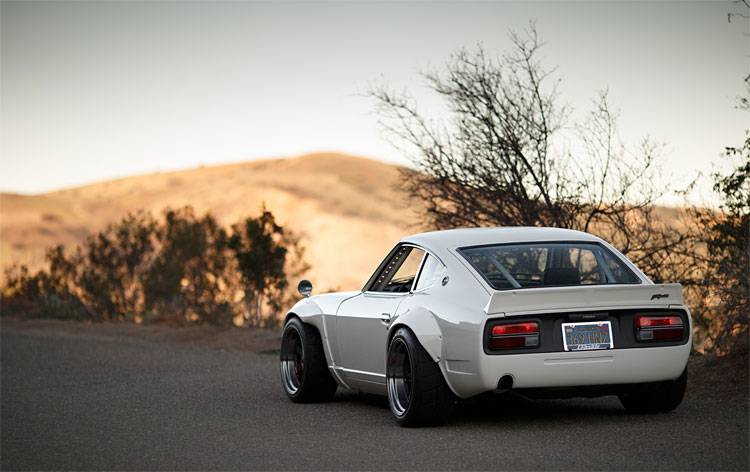

With the exception of the 2+2 models, all of the S30 variants actually share near-identical 2-seater bodies. With the main changes simply being badges, blinkers, and larger bumpers.
The 280z featured thicker steel to the bumper supports and side beam protection due to updated safety regulations. It also had recessed tail lights, turn signals which were integrated into the front grill and slightly amended suspension.
It was, however, at least 400lbs heavier due to these, and also an inch taller in stock form.
As time went on, the interiors got increasingly luxurious and a nicer place to reside on a daily basis, which is where it began its transformation from a hardcore racer to a more humble grand tourer.
Suspension Changes – 240z vs 280z
Despite a lot of similarities between the suspension setups of both cars, most components aren’t interchangeable between the two models due to beefier struts on the 280z.
Contrary to popular belief, the weight additions in the younger brother required the suspension to be slightly different to accommodate. For that reason, we’d not personally want to swap out our tired 240z suspension for a convenient 280z alternative, or vice versa.
Which is Best? 240z vs 280z
As you can probably imagine, this isn’t the simplest of questions, despite the incredible number of similarities between the two models.
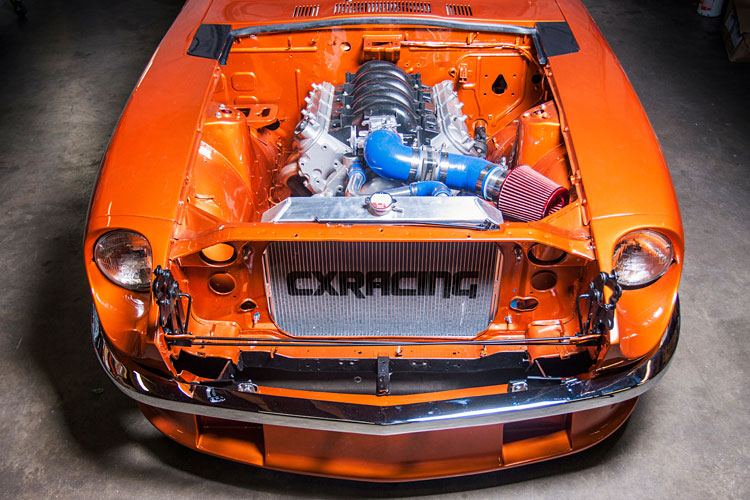

Our first consideration would be to think of your purpose for buying the car. Some may want to restore a classic back to its original condition to store in a museum, while others may want to carry out an LS swap to run walls at the track.
For that reason, we’re going to narrow down the reasons why we would opt for a specific car for your designated purpose, and we hope that it’ll help make the choice clearer when it comes to making your big decision.
Restoration – Winner: 240z
If you’re looking to fully restore an S30 chassis, we have to give the 240z the win here. Although parts for the 280z are undoubtedly going to be easier to fi
Engine Swap – Winner: 280z
Looking to create the ultimate beast? Despite the additional weight of the 280, this is likely to become rather irrelevant when it comes down to an engine swap.
For that reason, the 280z is stronger, stiffer and also easier to source parts for. You can also sleep easy knowing that it’s not likely to be a classic Series I, which would be worth huge money and anger a heap of purists!
The ultimate drive – Winner: 240z
Sure, the 280z may have more power and a stiffer chassis, but there’s no question to us that the 240 maintains the legendary driving feel which made these cars so popular. Carrying less weight around will undoubtedly help give it a much better feel in the twisties!
Modifying – Winner: 280z
Whether you’re wanting to go drifting, build a frame-laying stance whip or head to the track, the 280z is going to tick the most boxes, for the same reason as our engine swap statement.
95% of ‘everyday’ members of the public aren’t going to know the difference between the two cars, and they’re classic enough now that they’ll stand out a mile on the road regardless. You’ll most likely be safe from angering the purists, too!
Weigh – Winner: 240z
There’s no question which model is lighter, and if you’re looking for a straight-out-of-the-box handling package that is as light as a car can be, the 240z is going to be the choice for you.
Building a track weapon – Winner: 280z
For basic occasional track use, this may well go to the 240z. Out of the box, we must prefer it as a ‘drivers’ car, however, the chances are you’ll be falling into the ‘modifying’ category above here, so let’s just stick with the more affordable option which still has the same stunning looks. Think of it as a ‘good karma’ thing!
Engine – Winner: 280z
With 170hp compared to the 151hp under the hood of the 240, there’s no question that the later fuel injection L28 engine takes the win here. Whether you’re looking for additional power, the convenience of sourcing parts, or reliability, it wins on all accounts.
On the flip side, some of you love the original carburetor engines, in which case the 240 is going to have the motor of choice for you!
Future Value/Collectability – Winner: 240z
This is a no brainer. With the 240 being lighter, they managed this by creating it with thinner materials, which therefore make it even more prone to the dreaded corrosion issues which car enthusiasts dread.
For that reason, many 240s have likely already made their way to the car graveyards and been parted out, which ex-owners are likely to be regretting.
Whether you own a Series I or a later 240, in the years to come these will undoubtedly become increasingly desirable as they are the first true ‘Z’ car.
Rust – Winner: 280z
We don’t like to mention the dreaded ‘r’ word, but let’s face it, as JDM enthusiasts we’ve come to know it a little better than we’d like!
With the 280z being made of stronger, heavier materials, it’s definitely more built to last than the 240. If you live in areas where they have salt on the road during winter, we’d highly recommend placing it in storage for the colder months.
Hey Good Lookin’ – Winner: 240z
Despite the same body lines, the later safety upgrades on the 280z did make it look a little less awesomely retro, so the 240z definitely wins the beauty contest for us!
Daily Driving/Comforts – Winner: 280z
As the years went on, Nissan added more and more luxury comforts into the 280z, which undoubtedly makes it the comfier car to drive and a quieter, more refined place to be – even if it does lose some of the ‘race car’ appeal in the process.
Conclusion
As much as these cars are identical in many ways, they’re also extremely different. We think of the 240z as more of the original raw, planted sports car and the 280z leaning more towards the lines of a comfortable GT car.
Where the 240 is light, twitchy, and makes you feel like you’re behind the wheel of an eager race car, the 280 is more tamed, calm, and refined.
There’s no question that both are impressive cars and undoubtedly tick a whole lot of boxes. With their stylish, retro appearance combined with excellent all-around performance, they’re a true winner in every regard.



The 240z changed the history of the sports car and left behind a legacy that made the rest of the industry take Japan seriously in this market, which then paved the way for them to build some of the greatest cars of all time.
For this reason, the 240z was literally a game-changer in its time and the 280z simply became a modern-day equivalent. There’s no doubt that both are incredible cars, but for us, the true legend lies within the 240z. They’re not only a milestone car for Japanese automotive engineering, but a true classic.
They may not seem cheap to buy in the current market, but when you compare them to some of the other classics out there, they’re actually a great deal that will no doubt continue to rise in value.
Unfortunately, the 70’s era-steel hasn’t done these cars any favors with resisting the dreaded tin-worm, so we highly recommend you give any purchases you’re considering a thorough inspection. If you can find one with little to no rust, it’s undoubtedly going to be a superb purchase. If you’re lucky enough to already own one, then congratulations!
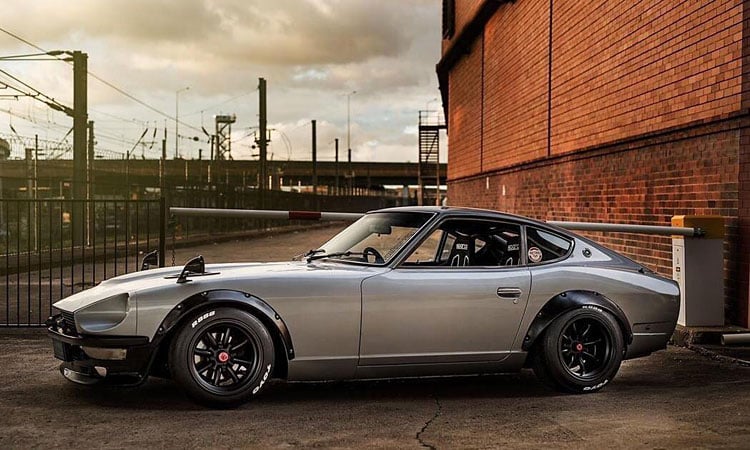

It’s been an incredible ride for the Fairlady family, and have Nissan continued growing strong after the S30 chassis. Since then, we’ve had the 280ZX, 300ZX, 350Z, 370Z, and then the 400Z which started rolling out of showrooms worldwide just recently.
We hope this article has provided you with everything you need to know about these awesome Datsuns, but please feel free to let us know if you’d like us to add some additional information.
If you enjoyed this article then please share it with the sharing buttons at the side and the bottom of your screen.
Additional 240z/280z Content
We never get tired of seeing 240s or 280s in any form, so we’ve sourced a couple more videos for your enjoyment too!
Jay Leno gets his hands on a 240z!
280z + 2JZ = Winner!
Not a 2JZ fan? How about a VR38? Sideways? You got it. This drifting GT-Z is what dreams are made of!
This 240Z has a more modern Nissan powerplant swapped in place of its ailing heart.
Photography credits
Drifted would like to extend thanks to the following sources for use of their images:
- Revvolution.com (Flickr)
- Ginash George (Flickr)
- Brad Sillars (Flickr)
- Jim Davis (Flickr)
- Nick Rico (Flickr)
- Final Form (Flickr)
- Alexander Nie (Flickr)
- Richy Contreras (Flickr)
- Christian Broussard (Flickr)
- CX Racing
- YouTube























